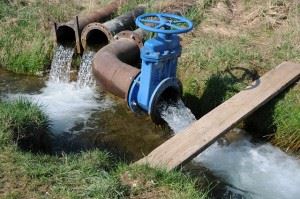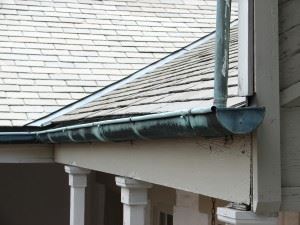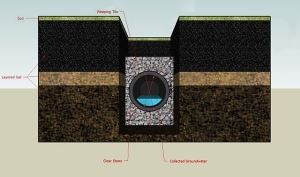How Important Is Having the Correct Drainage for Your Home?
This post is part one of two in a series about drainage.

To help prevent your house from becoming damaged, there are some important things you need to know about the building block of your house: the foundation. You might think foundations should always be firm, but they are constantly subjected to environmental elements and pressure from the soil around them. When the soil is dry it contracts, pulling away from the foundation, and when the soil is moist it expands, pushing against the foundation. Both of these changes put a great deal of pressure on that building block, and with the ever-changing moisture level these frequent changes can be dangerous, causing a house to move and suffer damage. A proper drainage system for your property is crucial to prevent problems.
Drainage Pipes
There are measures you can take to help protect your house and foundation with these types of drains:
Rain Gutters

Taken by: Mark Gstohl. CC 2.0.
Rain gutters are important, as they collect rainwater from the roof and transport it to another location, helping to keep unnecessary water away from a house and foundation. If working correctly, they keep a house and foundation dry and healthy, but if they are dysfunctional, they can cause several problems. Cleaning your gutters remedies some common problems, such as:
- Falling gutters. If rain gutters are not cleaned regularly, the debris that accumulates will add a lot of weight, causing them to detach from the house, and eventually fall.
- Overflowing gutters. If the gutters are clogged and water cannot escape, they can overflow and release unwanted water to the ground, posing a threat to your foundation.
- Mosquitos and pests. Stationary water can attract mosquitos and other pests.
Extended Drain Pipes / Diverters
Rain gutters are important, but they’re not enough to prevent moisture damage. Splash blocks, diverters, and inflatable drain pipes are also useful in moisture control, but are still not enough. Extended drain pipes that are at least 3′ to 5′ long significantly increase moisture control by leading water farther away from a foundation, and some even fold up to make yard maintenance easier.

Install French Drains
A French drain is a trench with a sock pipe between two layers of gravel. Water is caught in the sock pipe, and drained away from a house and foundation.
Does your property need a French drain? Here are some situations where a French drain may be helpful:
- A surface water problem. A mushy yard or a driveway that easily washes out are good candidates for a shallow French drain. This type of drain is placed horizontally across your yard, uphill from the area you want to dry out where it intercepts the water before it has a chance to reach the soggy places.
- Water in your basement. Install a deep French drain, also known as a footer drain. This type of drain is placed around your house at the footing level and intercepts water before it reaches your basement. The hired crew will create a channel around the edges of your basement floor, chisel out concrete, and place perforated pipe all the way around. Water will then flow into a collection tank in the floor and a sump pump sends the water to the yard or a storm drain. Any water dribbling down the wall will be caught in the small gap.
- A retaining wall on a hillside. Add a French drain behind the first set of stones or blocks; otherwise, water that runs downhill will collect behind and put pressure on the wall, causing it to weaken.
If you have noticed symptoms of moisture damage or for more information on services, contact Ram Jacktoday and let the experts determine the best method to protect your house from structural problems.